Theatre is a world filled with unique terminology that can be overwhelming for newcomers and seasoned performers alike. Understanding these terms is crucial for anyone involved in the world of drama, from actors and directors to stage managers and audience members. This blog post explores the 50 most common theatre English terms, providing clear definitions, phonetic transcriptions, and practical examples to illustrate their use.
50 Theatre English Terms Every Student Must Know
Whether you’re a student, a professional, or simply a theatre enthusiast, mastering these terms will enhance your appreciation and performance in the theatrical arts. Dive into this comprehensive guide to familiarize yourself with essential theatre vocabulary and elevate your understanding of the dramatic world.
#1. Actor 🎭
Definition: A person who performs in plays, movies, or television shows.
Phonetic Transcription: /ˈæktər/
Examples:
- The actor delivered a powerful monologue that moved the audience.
- An actor must often rehearse their lines multiple times to perfect their performance.
#2. Audition 🎤
Definition: A tryout for a role in a play or film, where an actor demonstrates their suitability.
Phonetic Transcription: /ɔˈdɪʃən/
Examples:
- She had a successful audition and landed the lead role.
- Many actors prepare for weeks before their audition to ensure they perform their best.
#3. Backdrop 🎨
Definition: A painted cloth or set wall at the back of a stage setting.
Phonetic Transcription: /ˈbækdrɒp/
Examples:
- The backdrop was painted to resemble a bustling cityscape.
- The scene changed seamlessly as the backdrop was quickly shifted.
#4. Blocking 📍
Definition: The precise staging of actors to facilitate the performance.
Phonetic Transcription: /ˈblɒkɪŋ/
Examples:
- The director’s blocking ensured that each actor was positioned perfectly for the scene.
- Actors need to remember their blocking to move naturally and avoid collisions.
#5. Cast 🎭
Definition: The group of actors performing in a play or film.
Phonetic Transcription: /kæst/
Examples:
- The cast of the new musical received a standing ovation.
- Each member of the cast plays a crucial role in bringing the story to life.
#6. Dialogue 🗣️
Definition: The conversation between characters in a play or film.
Phonetic Transcription: /ˈdaɪəlɒɡ/
Examples:
- The dialogue between the two leads was witty and engaging.
- Good dialogue helps to develop characters and advance the plot.
#7. Dramaturgy 📚
Definition: The theory and practice of dramatic composition and performance.
Phonetic Transcription: /ˌdræməˈtɜːrdʒi/
Examples:
- The dramaturgy of the play involved complex themes and symbols.
- Understanding dramaturgy can enhance both writing and interpreting plays.
#8. Encore 👏
Definition: An additional performance or piece requested by the audience.
Phonetic Transcription: /ˈɒŋkɔːr/
Examples:
- The cast was called back for an encore after their spectacular performance.
- The audience’s enthusiastic applause led to an unexpected encore.
#9. Improvisation 🎭
Definition: The spontaneous creation of dialogue or actions by actors.
Phonetic Transcription: /ˌɪmprəvaɪˈzeɪʃən/
Examples:
- The actors showcased their improvisation skills during the rehearsal.
- Improvisation often leads to some of the most memorable moments on stage.
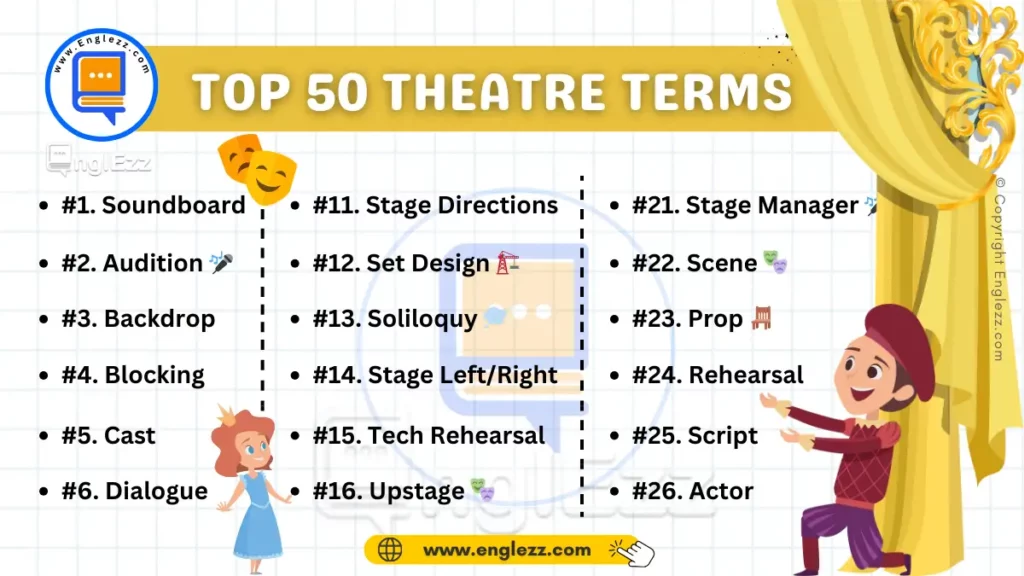
#10. Monologue 🎙️
Definition: A long speech by one actor in a play or film.
Phonetic Transcription: /ˈmɒnəlɒɡ/
Examples:
- Her monologue was both powerful and emotionally charged.
- An effective monologue can reveal deep insights into a character’s thoughts.
#11. Stage Directions 📜
Definition: Instructions in the script that describe the actions and movements of actors.
Phonetic Transcription: /steɪdʒ dɪˈrɛkʃənz/
Examples:
- The stage directions indicated a dramatic entrance through the main door.
- Actors use stage directions to understand their movements and interactions.
#12. Set Design 🏗️
Definition: The creation and arrangement of physical elements on stage.
Phonetic Transcription: /sɛt dɪˈzaɪn/
Examples:
- The set design transformed the stage into a medieval castle.
- Set design plays a crucial role in establishing the play’s atmosphere.
#13. Soliloquy 💭
Definition: A speech delivered by a character alone on stage, revealing their inner thoughts.
Phonetic Transcription: /səˈlɪləkwɪ/
Examples:
- The soliloquy in Act 3 was a pivotal moment for the protagonist.
- A soliloquy allows the audience to connect more deeply with the character’s emotions.
#14. Stage Left/Right ⬅️➡️
Definition: The left and right sides of the stage from the actor’s perspective.
Phonetic Transcription: /steɪdʒ lɛft/ /steɪdʒ raɪt/
Examples:
- The actor moved stage left to interact with the other character.
- The props were placed stage right for the upcoming scene change.
#15. Tech Rehearsal 🔧
Definition: A rehearsal focused on technical aspects like lighting and sound.
Phonetic Transcription: /tɛk rɪˈhɜːrsəl/
Examples:
- The tech rehearsal revealed several issues with the sound system.
- Lighting cues were carefully tested during the tech rehearsal.
#16. Upstage 🎭
Definition: The part of the stage furthest from the audience.
Phonetic Transcription: /ˈʌpsteɪdʒ/
Examples:
- The actor moved upstage to create distance from the other performers.
- Being upstage often means being less visible to the audience.
#17. Downstage 🌟
Definition: The part of the stage closest to the audience.
Phonetic Transcription: /ˈdaʊnsteɪdʒ/
Examples:
- The scene was set downstage to bring the action closer to the audience.
- Actors often move downstage to emphasize a dramatic moment.
#18. Crossfade 🎚️
Definition: A smooth transition between two lights or sounds.
Phonetic Transcription: /ˈkrɒsfeɪd/
Examples:
- The crossfade created a seamless shift from one scene to the next.
- Using a crossfade in lighting can enhance the mood of the performance.
#19. Fourth Wall 🧱
Definition: The imaginary barrier between the performers and the audience.
Phonetic Transcription: /fɔːrθ wɔːl/
Examples:
- Breaking the fourth wall can create a direct connection with the audience.
- The actor’s monologue addressed the audience, shattering the fourth wall.
#20. Cue 🎬
Definition: A signal for an actor or technician to perform an action.
Phonetic Transcription: /kjuː/
Examples:
- The actor waited for their cue to make a dramatic entrance.
- Lighting changes are often triggered by cues from the stage manager.
#21. Stage Manager 🎤
Definition: The person responsible for coordinating all aspects of a production.
Phonetic Transcription: /steɪdʒ ˈmænɪdʒər/
Examples:
- The stage manager ensured that every cue was executed flawlessly.
- Effective communication with the stage manager is crucial for a smooth performance.
#22. Scene 🎭
Definition: A division of an act in a play, usually set in one location.
Phonetic Transcription: /siːn/
Examples:
- The scene shifted to a new location
as the lights dimmed.
2. Each scene was carefully rehearsed to ensure smooth transitions.
#23. Prop 🪑
Definition: An object used by actors during a performance.
Phonetic Transcription: /prɒp/
Examples:
- The actor used a prop to enhance the realism of the scene.
- Props are often essential for creating the play’s setting and mood.
#24. Rehearsal 🕒
Definition: Practice sessions for a performance, where actors and crew prepare.
Phonetic Transcription: /rɪˈhɜːrsəl/
Examples:
- The cast went through several rehearsals before opening night.
- Rehearsals help to fine-tune performances and troubleshoot any issues.
#25. Script 📜
Definition: The written text of a play or film, including dialogue and stage directions.
Phonetic Transcription: /skrɪpt/
Examples:
- The actors followed the script closely during their performance.
- A well-written script is the foundation of a successful production.
#26. Soundboard 🎚️
Definition: The equipment used to control sound levels and effects.
Phonetic Transcription: /ˈsaʊndbɔːrd/
Examples:
- The soundboard operator adjusted the levels for clarity and balance.
- A soundboard can enhance the auditory experience of a play.
#27. Spotlight 💡
Definition: A powerful light used to highlight a specific area or performer.
Phonetic Transcription: /ˈspɒtlaɪt/
Examples:
- The spotlight illuminated the lead actor during the dramatic climax.
- Spotlights are used to focus the audience’s attention on key moments.
#28. Dialogue Delivery 🗣️
Definition: The way in which an actor delivers their lines.
Phonetic Transcription: /ˈdaɪəlɒɡ dɪˈlɪvəri/
Examples:
- Her dialogue delivery was both expressive and clear.
- Effective dialogue delivery can significantly impact the audience’s engagement.
#29. Breaking Character 😅
Definition: When an actor deviates from their role, often breaking the illusion.
Phonetic Transcription: /ˈbreɪkɪŋ ˈkærɪktər/
Examples:
- The actor struggled not to break character during the comedic scene.
- Breaking character can disrupt the flow of the performance and distract the audience.
#30. Cue-to-Cue ⏱️
Definition: A type of rehearsal focusing on transitioning between cues.
Phonetic Transcription: /kjuː tə kjuː/
Examples:
- The cue-to-cue rehearsal was essential for timing the light changes.
- This rehearsal helps to streamline the flow of the performance.
#31. Wing 🎭
Definition: The area offstage to the sides of the stage.
Phonetic Transcription: /wɪŋ/
Examples:
- Actors wait in the wings before making their entrance.
- Props and costumes are often stored in the wings for quick access.
#32. Stage Right/Left 🎭
Definition: The right and left sides of the stage from the audience’s perspective.
Phonetic Transcription: /steɪdʒ raɪt/ /steɪdʒ lɛft/
Examples:
- The actor exited stage right after delivering their lines.
- The set pieces were arranged stage left to create the desired effect.
#33. Green Room 🍃
Definition: The waiting area for performers before or after a performance.
Phonetic Transcription: /ɡriːn ruːm/
Examples:
- The actors relaxed in the green room before the show started.
- The green room is a space for performers to prepare and unwind.
#34. Box Office 🎫
Definition: The area where tickets are sold for performances.
Phonetic Transcription: /bɒks ˈɒfɪs/
Examples:
- The box office sold out of tickets within hours.
- Customers can purchase tickets directly from the box office before the show.
#35. Dressing Room 🪞
Definition: A private area where actors change costumes and prepare.
Phonetic Transcription: /ˈdrɛsɪŋ ruːm/
Examples:
- The actors used the dressing room to change into their costumes.
- Each performer had their own dressing room for privacy.
#36. Intermission ⏳
Definition: A break between acts in a performance.
Phonetic Transcription: /ˌɪntəˈmɪʃən/
Examples:
- The audience chatted and refreshed during the intermission.
- Intermission allows for quick adjustments to the set and costumes.
#37. Understudy 🎭
Definition: An actor who learns a role in case the main performer is unavailable.
Phonetic Transcription: /ˈʌndərˌstʌdi/
Examples:
- The understudy took over the role when the lead actor fell ill.
- An understudy must be prepared to step in at a moment’s notice.
#38. Costume Designer 👗
Definition: The person responsible for designing and creating costumes for a production.
Phonetic Transcription: /ˈkɒstjuːm dɪˈzaɪnər/
Examples:
- The costume designer crafted elaborate outfits to fit the historical setting.
- Costume designers work closely with the director to align with the production’s vision.
#39. Act 🎭
Definition: A major division of a play, typically composed of several scenes.
Phonetic Transcription: /ækt/
Examples:
- The play was divided into three acts, each with its own unique setting.
- The actors took a break between the first and second acts.
#40. Repertory Theatre 🏛️
Definition: A type of theatre where different plays are performed in rotation.
Phonetic Transcription: /ˈrɛpərˌtɔːri ˈθɪətər/
Examples:
- The repertory theatre company rotated their performances weekly.
- Repertory theatres allow actors to showcase a range of roles and genres.
#41. Playwright ✍️
Definition: A person who writes plays.
Phonetic Transcription: /ˈpleɪraɪt/
Examples:
- The playwright received acclaim for their innovative script.
- A successful playwright must understand both character development and dramatic structure.
#42. Director 🎬
Definition: The person who oversees and coordinates the artistic aspects of a production.
Phonetic Transcription: /dɪˈrɛktər/
Examples:
- The director guided the actors to achieve the desired emotional impact.
- A director’s vision shapes the overall tone and style of the play.
#43. Set Props 🪑
Definition: Objects used on stage to enhance the setting of a scene.
Phonetic Transcription: /sɛt prɒps/
Examples:
- The set props included furniture and decorative items to create a living room.
- Set props are carefully chosen to reflect the time period and location of the play.
#44. Lighting Designer 💡
Definition: The person responsible for creating the lighting plan for a production.
Phonetic Transcription: /ˈlaɪtɪŋ dɪˈzaɪnər/
Examples:
- The lighting designer used colored gels to create a dramatic effect.
- Effective lighting design can highlight key moments and enhance the atmosphere.
#45. Performance 🎭
Definition: The act of presenting a play or film to an audience.
Phonetic Transcription: /pərˈfɔːrməns/
Examples:
- The performance received rave reviews from critics and audiences alike.
- Each performance of a play can vary slightly depending on the actors’ interpretations.
#46. Set Change 🔄
Definition: The process of altering the stage setting between scenes.
Phonetic Transcription: /sɛt ʧeɪndʒ/
Examples:
- Set changes were executed quickly to minimize downtime between scenes.
- The smooth set change was crucial for maintaining the play’s pacing.
#47. Stagecraft 🎭
Definition: The skills and techniques involved in designing and constructing a stage production.
Phonetic Transcription: /ˈsteɪdʒkræft/
Examples:
- The production’s success was attributed to excellent stagecraft and design.
- Stagecraft encompasses everything from set design to lighting and props.
#48. Call Time ⏰
Definition: The time an actor or crew member is required to arrive before a performance or rehearsal.
Phonetic Transcription: /kɔːl taɪm/
Examples:
- The call time was set for 6:00 PM, an hour before the show began.
- Actors must adhere to call times to ensure the production runs smoothly.
#49. Chekhov’s Gun 🔫
Definition: A dramatic principle that every element introduced must be relevant to the plot.
Phonetic Transcription: /ˈʧɛkhɔːvz ɡʌn/
Examples:
- The playwright used Chekhov’s Gun to ensure every detail had significance.
- Chekhov’s Gun helps to create a cohesive and engaging narrative.
#50. Break a Leg 🤞
Definition: A traditional phrase used to wish actors good luck before a performance.
Phonetic Transcription: /ˈbreɪk ə lɛɡ/
Examples:
- The cast exchanged “break a leg” wishes before the opening night.
- Despite its seemingly negative connotation, “break a leg” is a term of encouragement.
Theatre English Terms Table
| #1. Actor 🎭 | #11. Stage Directions 📜 | #21. Stage Manager 🎤 |
| #2. Audition 🎤 | #12. Set Design 🏗️ | #22. Scene 🎭 |
| #3. Backdrop 🎨 | #13. Soliloquy 💭 | #23. Prop 🪑 |
| #4. Blocking 📍 | #14. Stage Left/Right ⬅️➡️ | #24. Rehearsal 🕒 |
| #5. Cast 🎭 | #15. Tech Rehearsal 🔧 | #25. Script 📜 |
| #6. Dialogue 🗣️ | #16. Upstage 🎭 | #26. Soundboard 🎚️ |
| #7. Dramaturgy 📚 | #17. Downstage 🌟 | #27. Spotlight 💡 |
| #8. Encore 👏 | #18. Crossfade 🎚️ | #28. Dialogue Delivery 🗣️ |
| #9. Improvisation 🎭 | #19. Fourth Wall 🧱 | #29. Breaking Character 😅 |
| #10. Monologue 🎙️ | #20. Cue 🎬 | #30. Cue-to-Cue ⏱️ |
| #31. Wing 🎭 | #32. Stage Right/Left 🎭 | #33. Green Room 🍃 |
| #34. Box Office 🎫 | #35. Dressing Room 🪞 | #36. Intermission ⏳ |
| #37. Understudy 🎭 | #38. Costume Designer 👗 | #39. Act 🎭 |
| #40. Repertory Theatre 🏛️ | #41. Playwright ✍️ | #42. Director 🎬 |
| #43. Set Props 🪑 | #44. Lighting Designer 💡 | #45. Performance 🎭 |
| #46. Set Change 🔄 | #47. Stagecraft 🎭 | #48. Call Time ⏰ |
| #49. Chekhov’s Gun 🔫 | #50. Break a Leg 🤞 |
Conclusion
Mastering theatre terminology not only enhances your appreciation of the art form but also improves your ability to engage with the complex world of stagecraft. From understanding the role of a director to navigating the intricacies of stage directions and props, this list of 50 common theatre English terms provides a solid foundation for anyone involved in or interested in theatre.
Whether you’re an aspiring actor, a dedicated director, or a curious audience member, knowing these terms will enrich your experience and deepen your understanding of the performance arts.
Continue exploring and embracing the rich vocabulary of theatre to fully appreciate the artistry and effort behind every production.

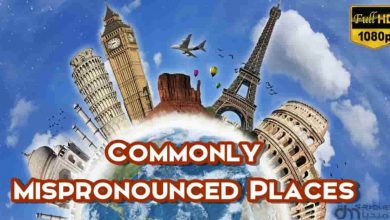
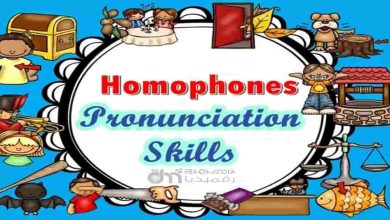

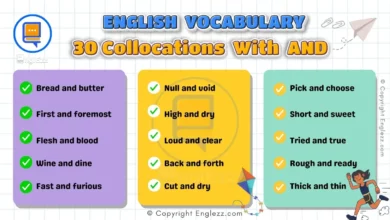


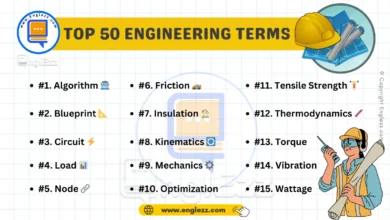

Unlock the secrets of the stage with our guide to the “50 Most Common Theatre English Terms Explained with Examples”!
🎭 Dive into essential theatrical vocabulary and enhance your understanding of the dramatic arts.
✨ Don’t forget to follow and like @EnglEzz for more engaging content on theatre and language. Check it out here:
.
https://www.englezz.com/most-common-theatre-english-terms/
.
#EnglEzz #vocabulary #linguistics #learnenglish #theatre #actorslife #stagecraft #drama #performingarts